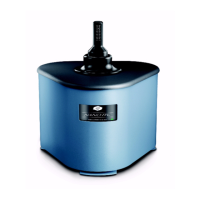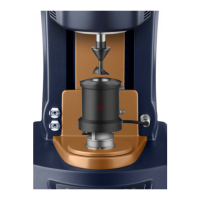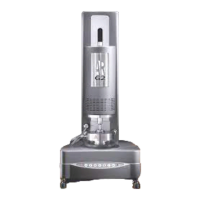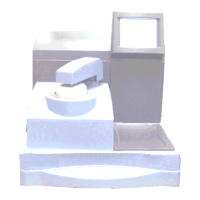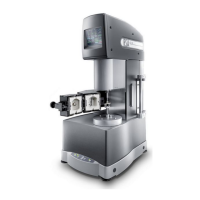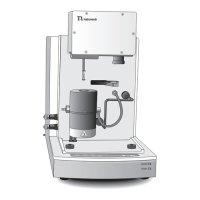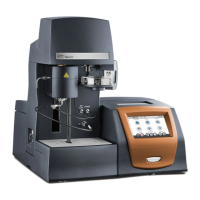Page 38 Nano ITC Getting Started Guide
Troubleshooting the Nano ITC
Minimizing Blank Corrections
There will always be blank corrections for experiments. However, minimizing the blank correction can
greatly improve the experimental results. Even when injecting water into water there will be some heat
produced due to viscous mixing. The viscous mixing heat is determined by many factors.
There are several steps that can be taken in order to minimize the dilution heats and hence the need for
blank titrations. Ligand (titrant) solution should always be made up in the same dialysis buffer used for the
protein (titrand). If the ligand is also a protein, it should be dialyzed in the same buffer. Less concentrated
solutions also have lower dilution heats and should be used when possible.
Operating at Non-Ambient Temperatures
The Nano ITC is designed to perform over a wide temperature range. When you use the instrument at tem-
peratures other than ambient, it is important to allow adequate time between injections for the titrant to
equilibrate to the calorimeter temperature before injection. Thorough degassing of the titrant is especially
important when operating above the ambient temperature. The optimal stirring speed (see below) may
change at different sample temperatures.
Stirring Speeds
Adequate stirring is required in order to have rapid mixing of the titrant upon injection, but excessive stir-
ring will result in noisy baselines. Generally, a stirring speed of 250 to 400 rpm is appropriate for instru-
ments made with gold sample and reference cells. In Hastelloy cell instruments, the best results are often
obtained with stirring speeds of 150–200 rpm. Higher speeds generally result in higher noise levels in the
baseline. In Hastelloy instruments, an additional sign of excessive speed is when the baseline contains a
ripple-like periodic variation.
On the other hand, stirring too slowly may result in broad titration peaks that require longer intervals
between injections. Reactions that have higher enthalpies can be run at faster stirring speeds, which then
allow shorter injection intervals. The best stirring speed will be a tradeoff between those various factors.
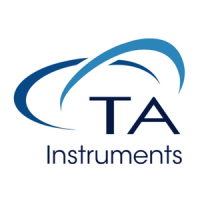
